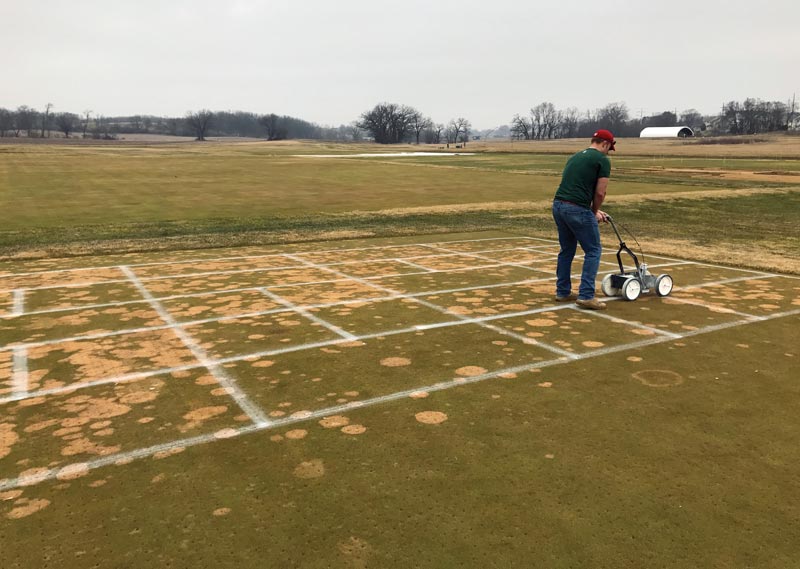
Photo by Douglas Soldat
The average putting green receives nearly 4 pounds of K2O/1,000 square feet each year. The conventional wisdom is that high levels of potassium confer tolerance to stress caused by disease, drought, cold and traffic, although research has not been conclusive in many cases.
The objective of this research was to investigate the impact of different levels of potassium fertilization on a bentgrass putting green. The six-year study began in 2011 on a USGA putting green with Penn A-4 creeping bentgrass (Agrostis stolonifera L.) that was treated with four levels of liquid potassium sulfate ranging from 0 to 6 pounds K2O/1,000 square feet/year.
There were no significant differences in chlorophyll index, visual turfgrass quality or clipping yield as a result of treatment over the six years. However, tissue potassium, Mehlich-3 soil potassium and Microdochium patch infection all increased as potassium rate increased.
Interestingly, potassium removed in clippings was much greater than the potassium extracted by both Mehlich-3 and a much stronger extractant (1 M HNO3). This suggests that plant potassium was taken up from a non-exchangeable pool. Hence, traditional soil-testing methods may be inadequate for estimating available potassium in sand-based root zones.
The total soil potassium in the zero-potassium treatment increased as a result of topdressing with a sand that contained 0.7% total soil potassium and was composed of 78% quartz, 17% potassium feldspar minerals and 5% hornblende. With topdressing sand being the only significant potassium input, the increase in potassium was a result of the potassium minerals in the sand being added faster than the plant could take them up. The potassium derived from the sand was sufficient to produce a stand similar to (and often better than) the treatments fertilized with potassium.
— P.V. Bier, United States Military Academy, West Point, N.Y.; and D. Soldat, Ph.D.; P. Koch, Ph.D.; and M. Persche, University of Wisconsin-Madison
Editor’s note: An earlier version of this summary was published in the 2017 ASA-CSSA-SSSA Meeting Abstracts, ASA, CSSA and SSSA, Madison, Wis.
Teresa Carson is GCM’s science editor.